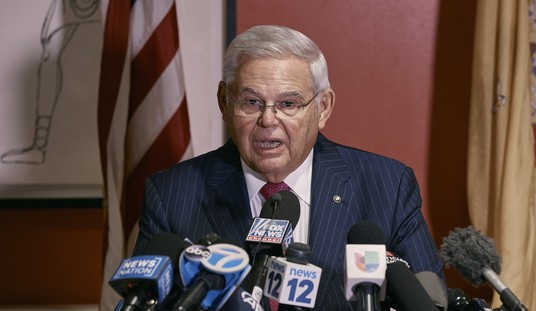I send my 6th grader and my 1st grader to a charter school in one of the most depressed neighborhoods in my state. I didn’t do it on purpose. I didn’t have a grand design about exposing my kids to the diversity of the inner city. It just sort of happened. After all, anything is better than the public schools in my area. The two main factors were that it was very close, and it purported to have an excellent curriculum. What we have found is that there are challenges we never anticipated, but there are also so many opportunities to do good and to make our community a better place, even beyond the confines of the school day.
How depressed is our community? Our school district has double the state average in the student poverty rate, with 32 percent of kids living in poverty. Our school is seemingly even worse off, with 53 percent of students in low income families. Several kids that go to our charter school are homeless. Thirty-eight percent of the kids in our charter school are English learners, and 65 percent are minority. We happen to live in the number one metropolitan area in the nation for divorce among millennials. The administration has had to evict several homeless campers from our charter school’s campus.
Our community is kind of forgotten, lying in a sort of no man’s land between two major municipalities. Economic development is historically non existent. Gang activity and gun violence are rampant. This community has a higher than average rate of rentals versus owned homes, which means the population is more transitory. In our school district, there are 69 different languages spoken in the home. So it would be fair to say that our school’s community is made up, in many cases, of broken homes, families facing serious obstacles to basic survival, language barriers, and generational economic challenges. Not exactly the most nurturing environment for learning. There is precious little community continuity.
In a typical school day, we often see a high rate of bullying. Behavioral issues remain a vexing issue. Many of the kids at our school don’t live with both parents—and often, not even one. It seems that in too many cases, parents and guardians don’t deal with the issues at home, assuming that it’s the school’s job. Respect for the rules varies widely. As one small example, a few months back a new pickup car line process was announced. When I flagged one parent down to remind him that he had just entered what was now the exit gate, he replied, “Thank you, Mr. Police Officer.” Several incidents of parents screaming obscenities at administrators have been reported. In far too many cases, a good example is lacking at home.
And yet, there is reason for great optimism. I have seen both my children thrive academically in this environment. The ability of a charter school to be semi-autonomous in the curriculum it offers is a huge advantage over the failure factories that make up many public school districts. Our school employs a Direct Instruction model, and pledges that all children will be able to read by the time they leave kindergarten. Students learn at their own pace by being separated into smaller learning groups of similar achievement level. I’ve spoken to several parents, and many more have testified at our local school board when the charter is up for approval. So many have said that this curriculum has helped their child succeed, when they’d been previously left behind by public schools. At risk kids don’t just coast. They thrive.
This charter school doesn’t just run a different curriculum. It does almost everything differently, including the schedule. Currently, the school year is 200 days—4 weeks longer than a typical public school in our state. The kids almost never have homework, because the school day runs from 7:30 a.m. to 4:30 p.m. (with an early release day on Wednesday). This longer school day means that for every six weeks, children get the equivalent of an extra week of direct instruction from their teachers. That’s on top of the extra 4 weeks in the school year. Students wear uniforms to reinforce adherence to serious academic expectations.
Regarding the bullying issue, an administrative shake-up that is barely a week old is already yielding positive results. At a recent meeting of parents, teachers and staff, several folks were moved to tears about how this change made an immediate impact for the better–again, after only one week. Such change is often not possible in a public school that is subject to the red tape of a school district bureaucracy. How often do we hear about ineffective public school administrators and teachers being promoted out of a position instead of being let go? This is the kind of nimble, fast-response action that can take place when bureaucrats aren’t required to be in the way.
Having autonomy over its curriculum, administration, and its facilities provides even more advantages to our charter school. Gone are the red tape, political encumbrances and biases when choosing community partners. Our school district, along with several other districts around the state, severed relationships with character building organizations such as Boy Scouts and Girl Scouts, as well as community organizations hosted by religious institutions. In addition, budget constraints led them to cut school based extracurriculars such as music and sports. In too many cases, bureaucracy and politics stifled beneficial community programs and forced them out of the public schools.
This is no longer a problem at our charter school, which is situated smack dab in the middle of a community that desperately needs more programs to help educate, build and grow. We now host a Latino Community group, several church groups, a children’s theater, and Scouting units. The school is also looking into renting its facilities out to other groups in the community that will eventually make this school a hub of activity, learning, and growth for residents of all walks of life.
This type of community immersion is not often found in public schools. Our urban charter school can meet students and parents where they are, assess their needs, and help them overcome obstacles—not just in their academic lives, but as parents, community members, and future leaders. It’s not overstating the case to say that our urban charter school is a vital resource for rebuilding a broken community. Despite the many challenges we face, our opportunities to solve entrenched problems in our community are nearly endless.










Join the conversation as a VIP Member